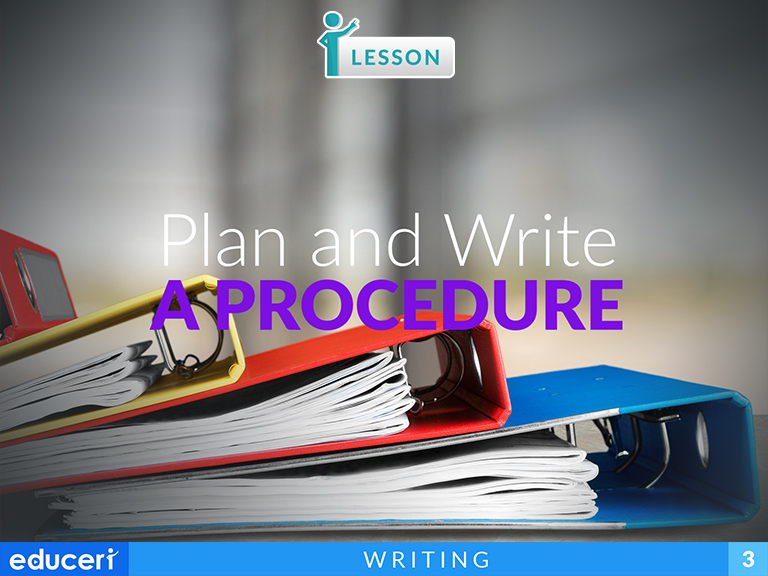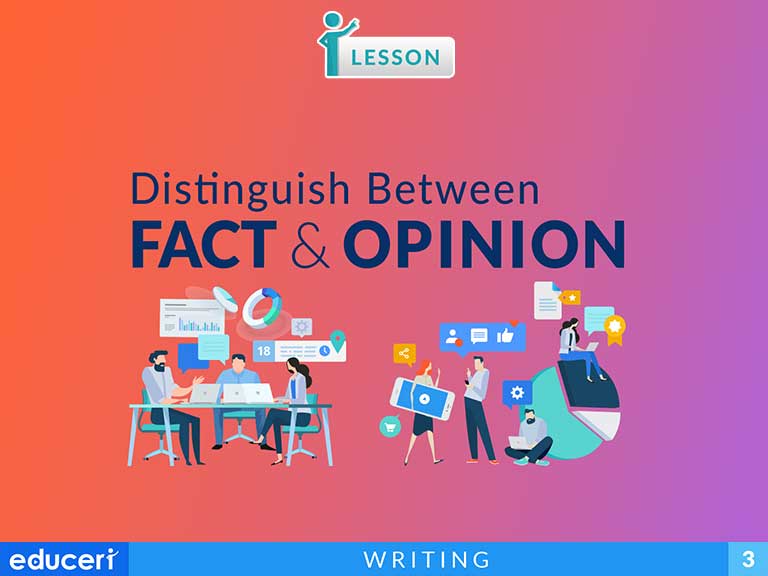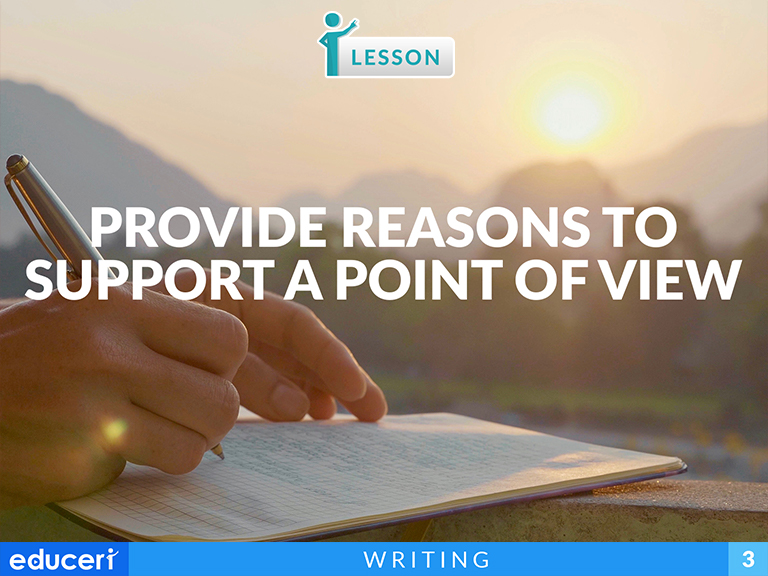All Lessons
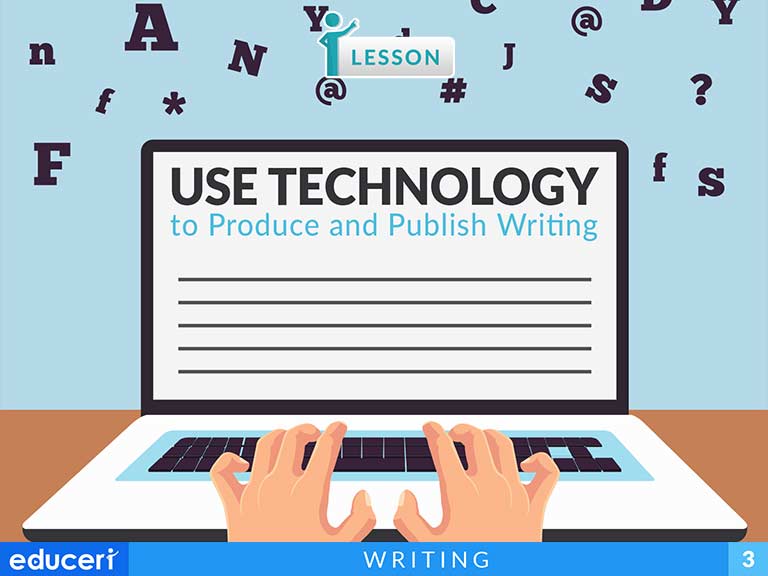
Use Technology to Produce and Publish Writing
In this writing lesson, students will practice using technology to produce and publish the text. In this lesson, students will format text on a computer (such as center, bold, font size, indent, double space) and then use a publishing checklist to review formatting before printing. The teacher will need to provide students with the practice texts in a document on their own computer.
Share This Lesson
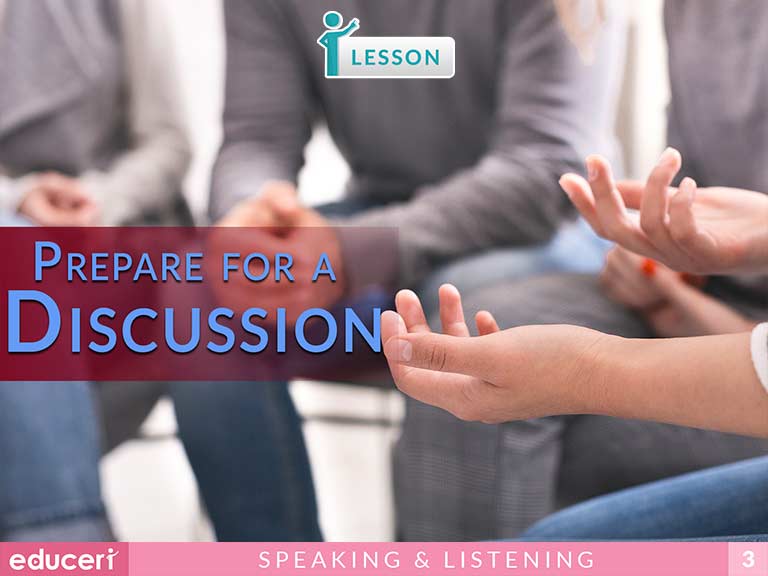
Prepare for a Discussion
This speaking and listening lesson helps students prepare for discussions. In this lesson, students will read a text, take notes on the text, and consider questions to ask about the text for a later discussion.
Share This Lesson
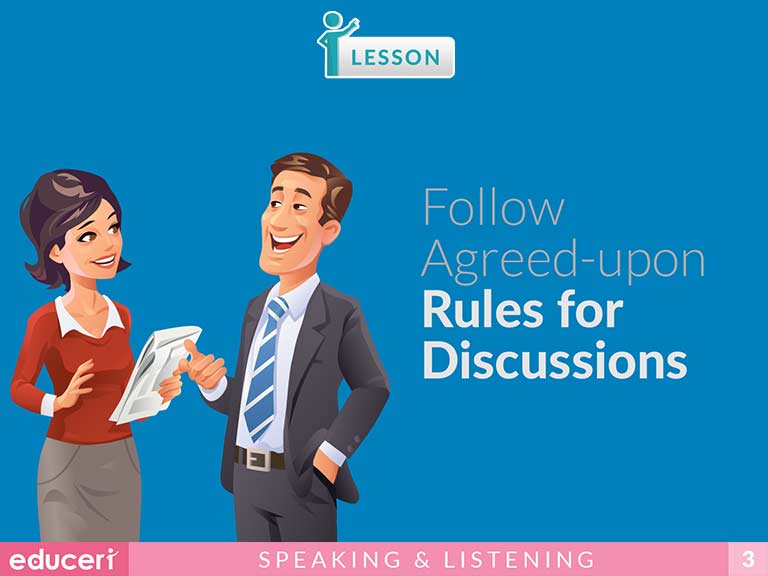
Follow Agreed-upon Rules for Discussions
This speaking and listening lesson helps students practice participating in collaborative discussions. In this lesson, students will learn specific rules for discussion, examine certain discussion situations, and then determine which agreed-upon rule is being used or not used (such as the active listener, one speaker, focus, gain the floor, and golden rule). (Also aligns with 3.SL.6.) In addition to the lesson, there are four pages of Independent Practice and review with questions modeled after the Common Core assessment items.
Share This Lesson
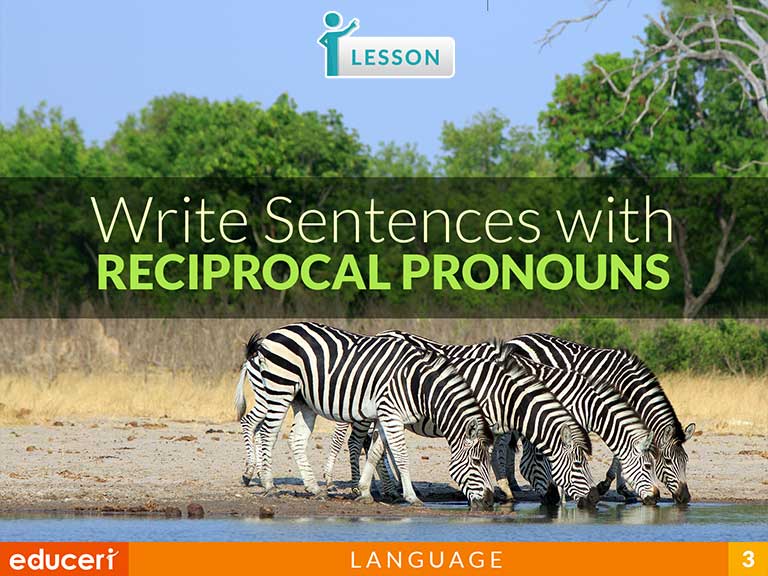
Write Sentences with Reciprocal Pronouns
This language lesson covers the use of reciprocal pronouns (each other and one another). The lesson includes research-based strategies and strategic questions that prepare students for assessments. In this lesson, students will learn when to use "each other" versus when to use "one another".
Share This Lesson

Use Abstract Nouns
This language lesson covers the use of abstract nouns in a sentence or paragraph. The lesson includes research-based strategies and strategic questions that prepare students for assessments. The nouns are grade-specific, and cover general, academic, and domain-specific words and phrases. Students should be reminded that abstract nouns cannot be experienced using the five senses (sight, sound, touch, smell, taste).
Share This Lesson
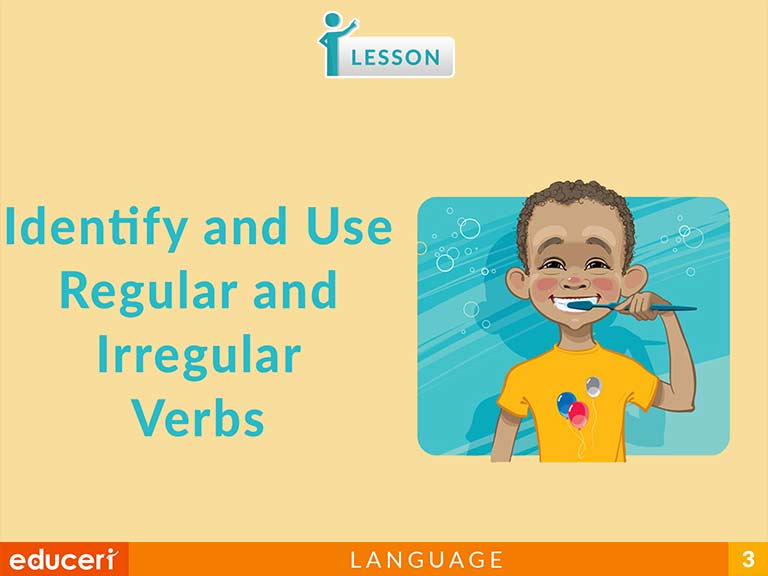
Use Regular and Irregular Verbs
This language lesson covers regular and irregular verbs. The lesson includes research-based strategies and strategic questions that prepare students for assessments. In this lesson, students will learn to form and use regular and irregular verbs.
Share This Lesson
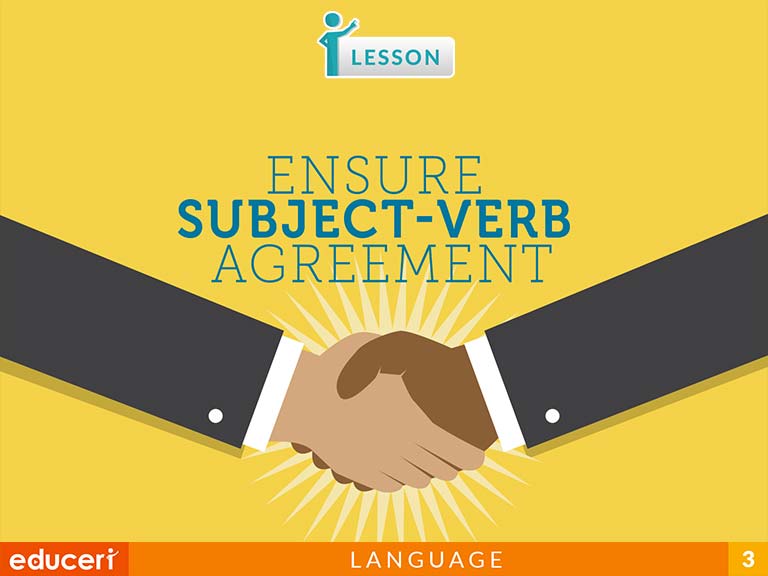
Ensure Subject-Verb Agreement
This language lesson covers the subject-verb agreement. The lesson includes research-based strategies and strategic questions that prepare students for assessments. In this lesson, students will learn to identify and ensure correct subject-verb agreement in sentences and paragraphs.
Share This Lesson
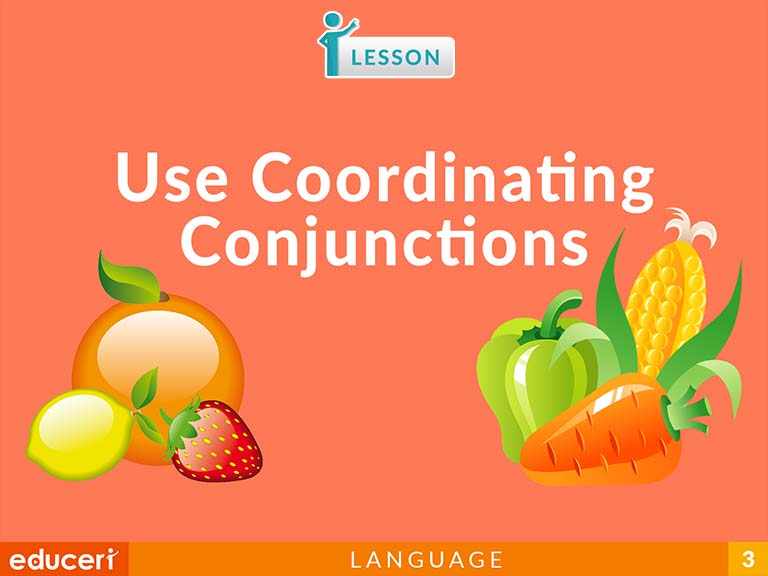
Use Coordinating Conjunctions
This language lesson covers coordinating conjunctions. The lesson includes research-based strategies and strategic questions that prepare students for assessments. In this lesson, students will practice using conjunctions to join words based on the relationship between words. It will be helpful if students are already familiar with complete simple and compound sentences prior to this lesson.
Share This Lesson
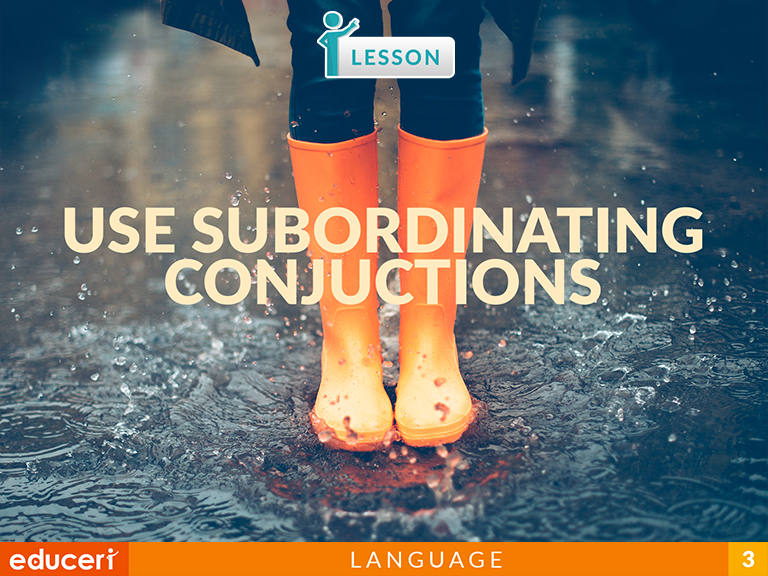
Use Subordinating Conjunctions
This language lesson covers subordinating conjunctions. The lesson includes research-based strategies and strategic questions that prepare students for assessments. In this lesson, students will practice using subordinating conjunctions in sentences and paragraphs. It will be helpful if students are already familiar with complete simple and compound sentences prior to this lesson.
Share This Lesson
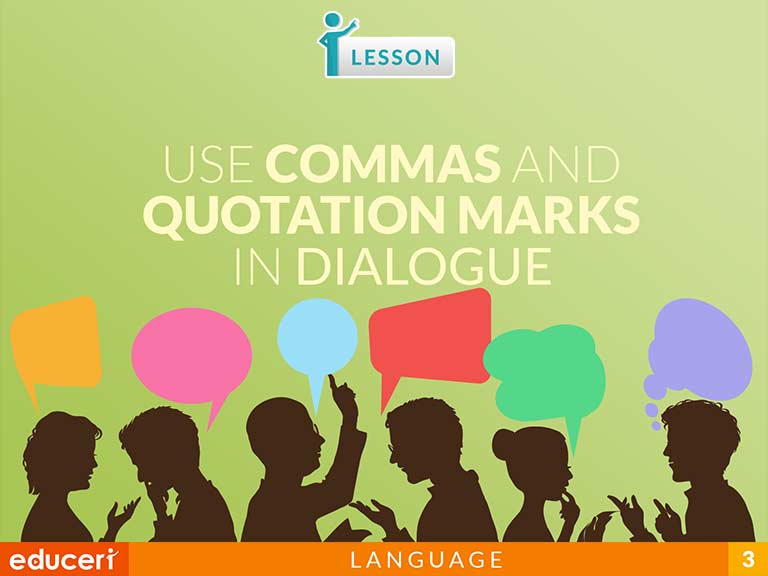
Use Commas and Quotation Marks in Dialogue
This language lesson covers the proper use of commas and quotation marks. The lesson includes research-based strategies and strategic questions that prepare students for assessments. In this lesson, students will practice the correct placement of quotation marks and commas with dialogue.
Share This Lesson
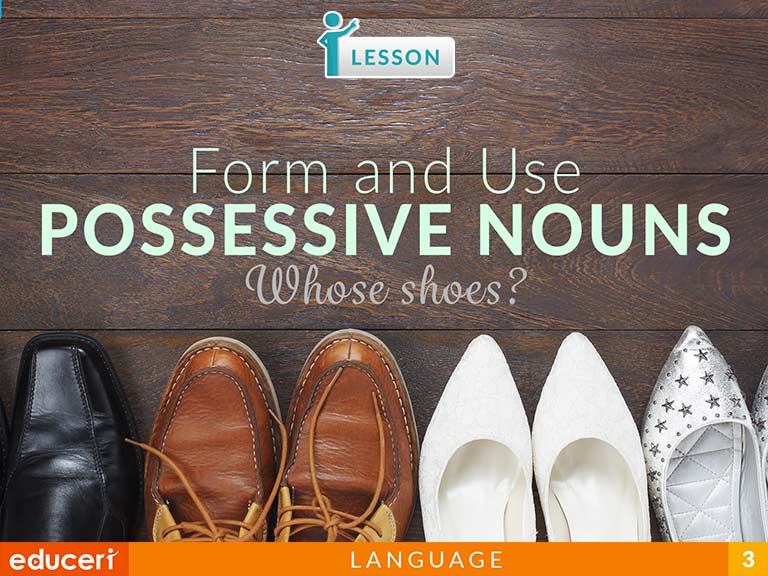
Form and Use Possessive Nouns
This language lesson covers the formation and use of possessive nouns. The lesson includes research-based strategies and strategic questions that prepare students for assessments. In this lesson, students will practice forming and using possessive nouns. It will be helpful if students are already familiar with common, proper, possessive, collective and irregular plural nouns.
Share This Lesson
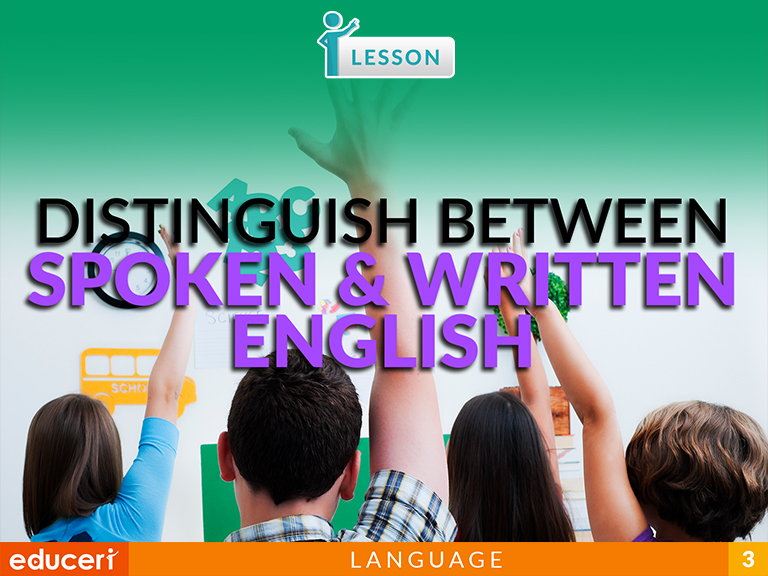
Spoken and Written English
This language lesson requires students to distinguish between language that is written and spoken. The lesson includes research-based strategies and strategic questions that prepare students for assessments. In this lesson, students will practice and compare the formal and informal uses of spoken and written English.
Share This Lesson

Identify Connections Between Words and Their Use
This language lesson includes research-based strategies and strategic questions that prepare students for assessments. In this lesson, students will identify and use appropriate words and vocabulary based on subject matter and context.
Share This Lesson
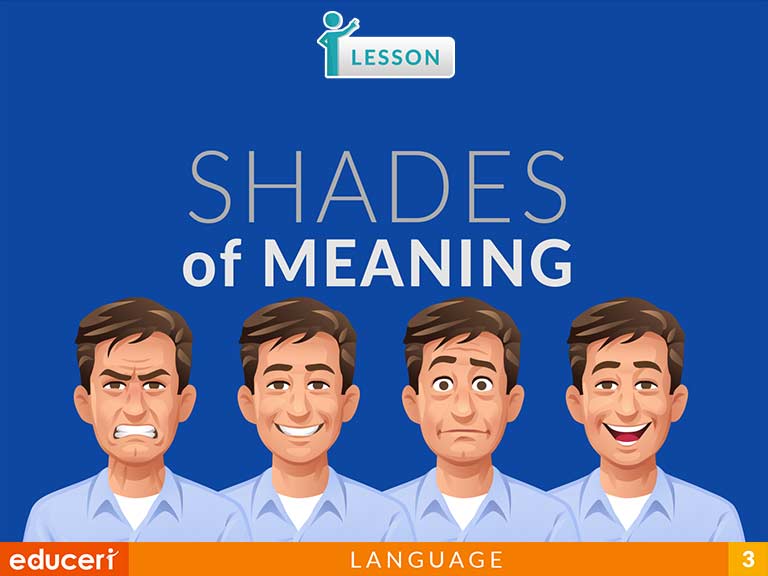
Shades of Meaning
This language lesson requires students to distinguish between words with shades of meaning. The lesson includes research-based strategies and strategic questions that prepare students for assessments. In this lesson, students will practice using content-specific vocabulary and distinguishing between closely related words (e.g. thin, slender, skinny).
Share This Lesson
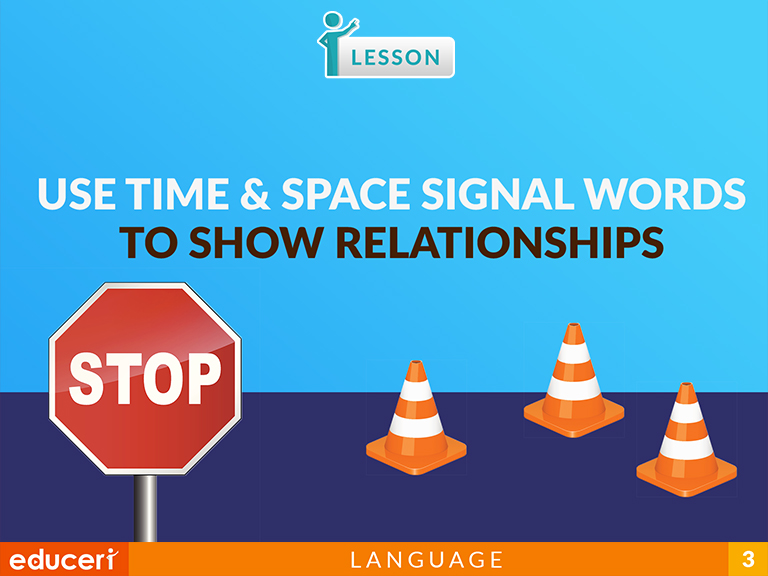
Use Signal Words to Show Relationships
The language lesson includes research-based strategies and strategic questions that prepare students for assessments. In this lesson, students will identify clues within the sentence that help them determine the proper use of words that show time (such as during, after, etc.) and words that show location (such as beneath, against, etc.).
Share This Lesson
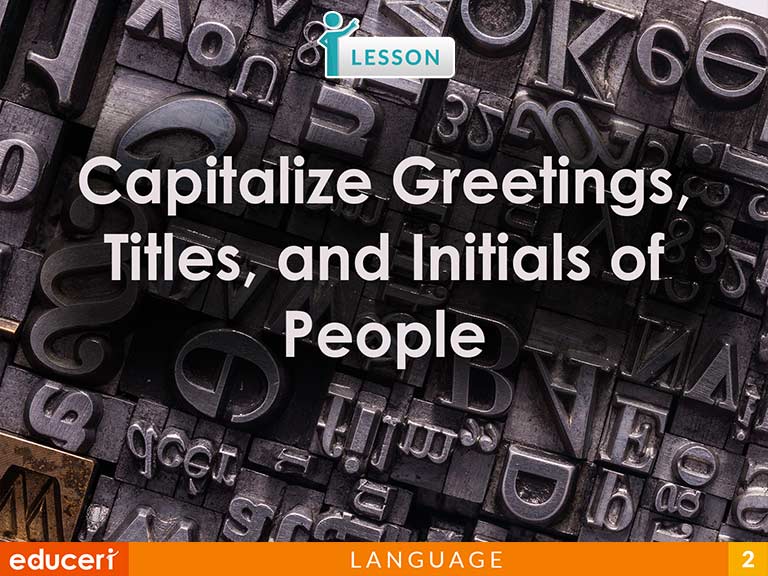
Capitalize Greetings, Titles, and Initials of People
This writing conventions lesson focuses on capitalizing greetings, titles, and initials of people. The lesson includes research-based strategies and strategic questions that prepare students for assessments. In this lesson, students identify words that should be capitalized and select the correct use in a sentence. In addition to the lesson, there are five pages of Independent Practice and review with questions modeled after current adaptive testing items.
